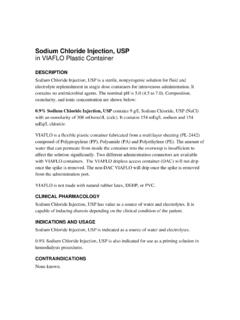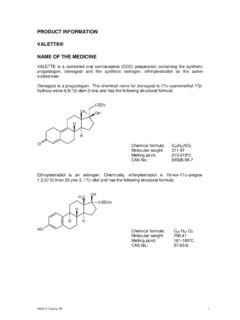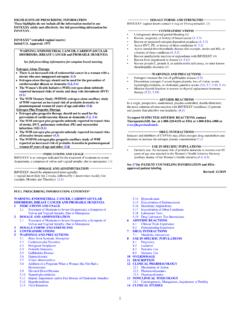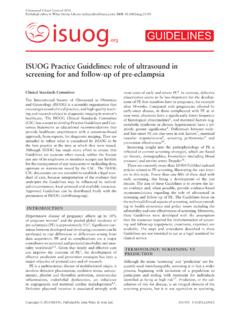Transcription of - 1 - Laser beam shaping has never been so easy!
1 - 1 - beam shaping in High-Power Laser Systems with Using Refractive beam Shapers Alexander Laskin, Vadim Laskin AdlOptica GmbH, Rudower Chaussee 29, 12489 Berlin, Germany ABSTRACT beam shaping of the spatial (transverse) profile of Laser beams is highly desirable by building optical systems of high-power lasers as well in various applications with these lasers. Pumping of the crystals of Ti:Sapphire lasers by the Laser radiation with uniform (flattop) intensity profile improves performance of these ultrashort pulse high-power lasers in terms of achievable efficiency, peak-power and stability, output beam profile.
2 Specifications of the solid-state lasers built according to MOPA configuration can be also improved when radiation of the master oscillator is homogenized and then is amplified by the power amplifier. Features of building these high power lasers require that a beam shaping solution should be capable to work with single mode and multimode beams, provide flattop and super-Gauss intensity distributions, the consistency and divergence of a beam after the intensity re-distribution should be conserved and low absorption provided. These specific conditions are perfectly fulfilled by the refractive field mapping beam shapers due to their unique features: almost lossless intensity profile transformation, low output divergence, high transmittance and flatness of output beam profile, extended depth of field, adaptability to real intensity profiles of TEM00 and multimode Laser sources.
3 Combining of the refractive field mapping beam shapers with other optical components, like beam -expanders, relay imaging lenses, anamorphic optics makes it possible to generate the Laser spots of necessary shape, size and intensity distribution. There are plenty of applications of high-power lasers where beam shaping bring benefits: irradiating photocathode of Free Electron Lasers (FEL), material ablation, micromachining, annealing in display making techniques, cladding, heat treating and others. This paper will describe some design basics of refractive beam shapers of the field mapping type, with emphasis on the features important for building and applications of high-power Laser sources.
4 There will be presented results of applying the refractive beam shapers in real installations. Keywords: beam shaping , flattop, tophat, supergauss, Ti:Sapphire, Laser pumping, MOPA, ultrashort, high power Laser , homogenizing. 1. INTRODUCTION shaping the spatial (transverse) profile of Laser beams is often considered as a way of improving optical design of high-power lasers as well in various applications with these lasers. There exist several approaches of beam shaping of Laser radiation that are widely used in scientific and industrial applications to transform the intensity distribution of a beam from a typical Gaussian profile to flattop, super-Gauss or other profiles.
5 Modern techniques, like refractive field mapping beam shapers Shaper, allow to provide not only a simple homogenizing of a beam in a certain field but create various intensity distributions with using the same beam shaper. This flexibility in generation of various profiles can serve as a very fruitful mean of improving the design of various solid state lasers, for example, optimizing conditions of pumping the ultrashort pulsed lasers or amplification in MOPA Laser designs, reducing thermal load of a crystal and avoiding thermal lensing, etc. beam shaping is also important in plenty of Laser applications where uniform or other intensity distributions are highly desirable.
6 This paper will describe some design basics of Shaper - refractive beam shapers of field mapping type, with emphasis on the features important for building and applications of high-power Laser sources. There will be presented results of applying the refractive beam shapers in real research installations. 2. THEORETICAL CONSIDERATIONS By building the optical systems of high power lasers there are several optical tasks that can efficiently solved with using the refractive beam shapers transforming the intensity profile of a Laser beam . One of these tasks is pumping of crystals of solid-state lasers, for example Ti:Sapphire crystal with multimode radiation of second harmonic of Nd:YAG.
7 A common problem this case is in high peak intensity in the centre of that pumping beam that leads to thermal lensing and danger of damage of the Ti:Sapphire crystal. As result there are limitations of quality and achievable output Laser power of ultrashort pulse Laser , instability of Laser operation. Transforming of that pumping beam to a - 2 - beam of uniform of intensity or even providing a concave (or inverse Gauss ) intensity distribution helps to overcome those problems and provide more efficient optical systems of solid-state lasers. Similar positive effect of beam shaping is important in high power lasers built according to MOPA configuration.
8 With flattop or super-Gauss intensity profile of a beam after seed Laser it is possible to achieve higher amplification of the radiation in amplifier due to more efficient use of energy from pump source, reduce the influence of thermo lensing. As result the higher levels of output power as well as more reliable Laser operation can be achieved. The beam shaping becomes a mandatory technique when the output beam of the high power Laser has to have a flattop profile. Transformation of Gaussian or close to Gaussian intensity profile to flattop one is also important in plenty of applications of high-power lasers.
9 For example, irradiating photocathode of Free Electron Lasers (FEL) with a Laser beam of flattop or another intensity profile makes it possible to bring special features of electron beam . Other applications examples are Laser material ablation, Laser -induced incandescence, annealing in display making techniques and others. To make the above mentioned effects realizable the beam shaping optics to be applied in optical systems of high power lasers has to meet some requirements: - conserving the structure and low divergence of a Laser beam , - realizing beam shaping in general sense, not only beam homogenizing but also providing other profiles, like super-Gauss, inverse Gauss , - it is highly desirable that the variety of these profiles can be realized with the same beam shaper, - capability to work wit TEM00 and multimode Laser sources, - adaptability to conditions of particular Laser optical system, - high transmission, - high resistance to powerful Laser radiation, etc.
10 As an efficient solution to these tasks it is suggested to apply the refractive refractive field mapping beam shapers Shaper capable to provide various intensity distributions, Fig. 1. The design principles of refractive beam shapers of the field mapping type are well-known and described in the literature1,2,3,4. These beam shapers have two optical components and transform the Laser beam profile in a controlled manner, by accurate inducing of wave aberration by the first component and further its compensation by the second one, , top. The resulting collimated output beam has a uniform intensity and flat wave front.






